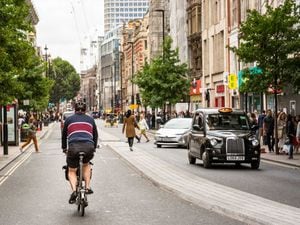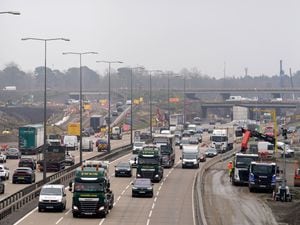Majority of motorists think new pedestrian and cyclist road rules will cause more conflict
Government introduced new ‘hierarchy of road users’ to protect those who are more vulnerable.

Almost two-thirds of motorists think that the Government’s new ‘hierarchy of road users’ will cause more conflict on the road.
The rules were introduced at the end of January as part of changes to the Highway Code, and state that those who have the potential to cause more harm on the road have the most responsibility for avoiding a collision.
In practice, this means that drivers of HGVs, buses, vans, cars and motorcycles need to be more aware of pedestrians and cyclists. It also introduced new recommendations for who has priority in certain situations and where vehicles should be positioned on the road.
Road safety charity IAM Roadsmart surveyed 1,000 motorists and found 59 per cent believed the new system will cause more conflict on the road, rather than make them safer.
Just six per cent said things would improve, with 13 per cent saying there would be no difference.
Under the new rules, pedestrians have priority at junctions, with drivers turning into or out of them having to give way to those on foot. Of those surveyed, 54 per cent said this will cause more conflict, with just 15 per cent saying it would reduce conflict.
Neil Greig, director of policy and research at IAM RoadSmart, said: “It is concerning to see the number of motorists who believe the new rules implemented in the hierarchy of road users will cause more conflict on our roads, rather than less.
“The changes to the Highway Code are a reminder to all road users to behave responsibly with a mutual respect for each other’s safety. The hierarchy offers clarity as to where priority should be given in various scenarios, so it is important for all road users to understand how the changes will affect them and others in real situations on the road.

Greig added that an upcoming information campaign from the Department for Transport should add clarity, but noted: “We would urge the DfT to be more realistic about the impact that simply changing a seldom read document will have on the behaviour and safety of road users, and instead, roll out more intensive and timely campaigns to build awareness and confidence in the new code.”
While some of the new rules are guidance around how to behave on the road, some are legal requirements and can carry points and a fine if ignored. It is therefore up to the road user to be aware of the changes and obey them.
The key things to note are that those who can do the most damage now have the most responsibility to reduce danger, with HGVs at the top, cars and motorcycles around the middle, and pedestrians and cyclists at the bottom.
Cyclists should make themselves more visible on the road by riding in the centre of the lane on quiet roads, in traffic and when approaching junctions, while also taking care not to pass pedestrians and horse riders too closely or quickly.





